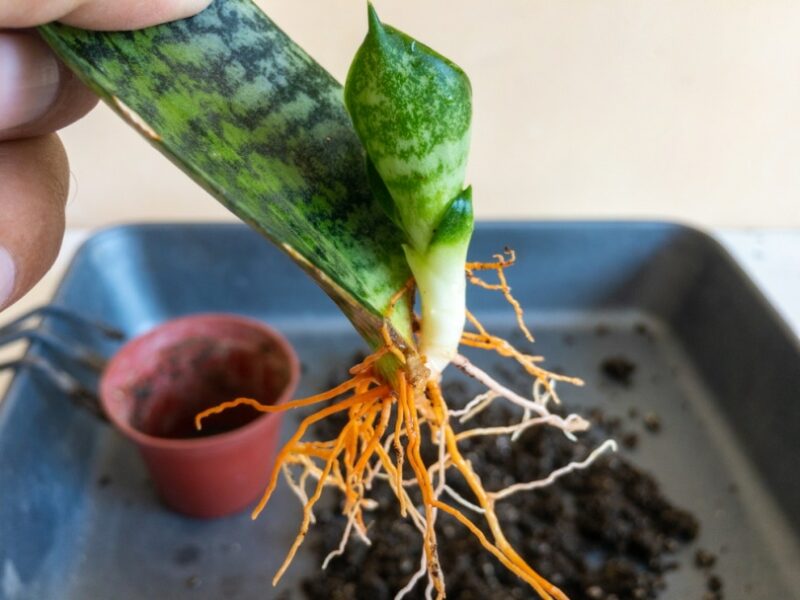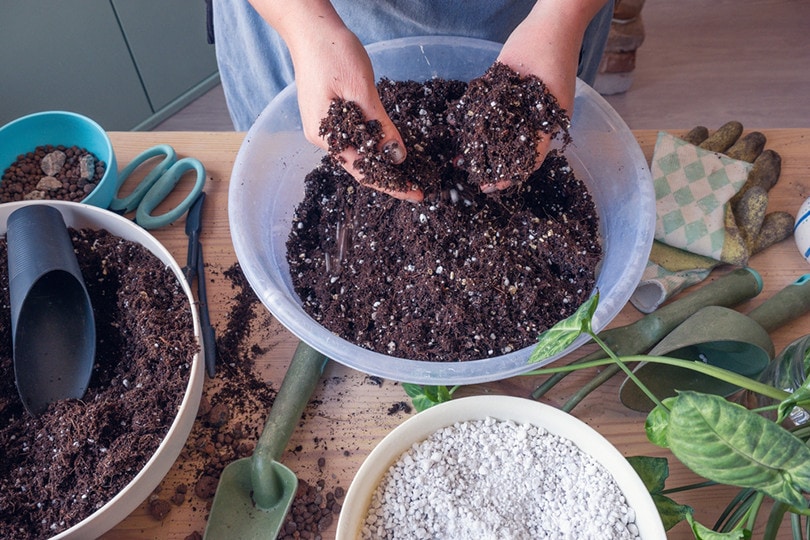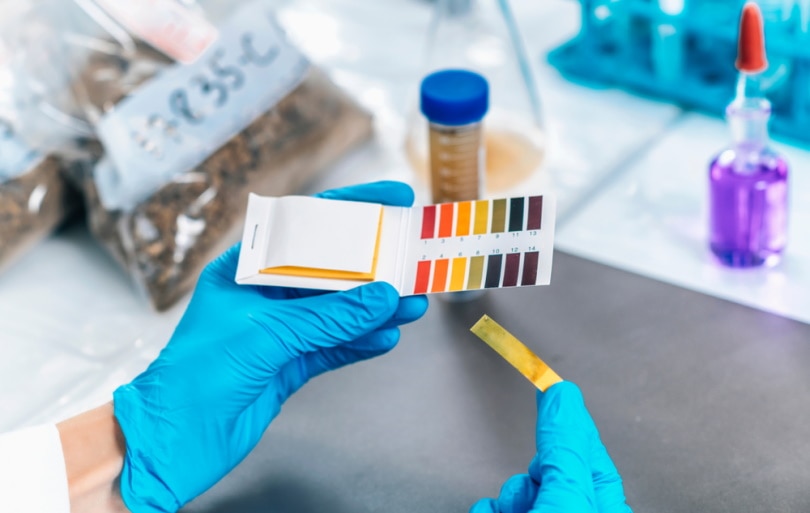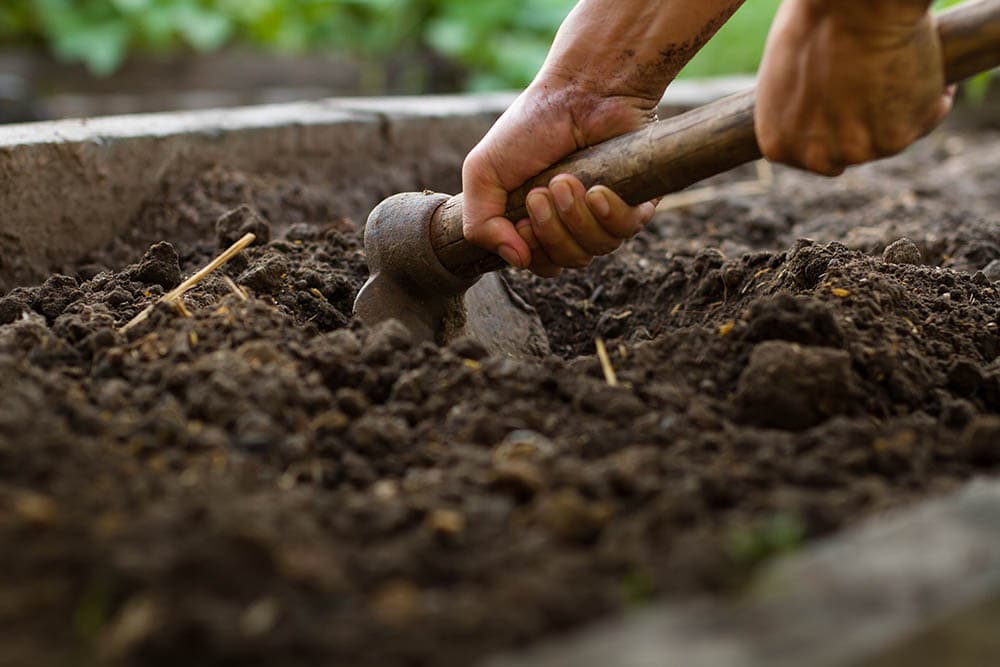How to Make Potting Soil for Snake Plants (Step-by-Step Guide)
-
Pete Ortiz
- Last updated:

Snake plants have very specific soil needs that can make them feel finicky. The truth is, as long as your snake plant has the proper soil, it will be generally easy to care for. Nailing the potting soil is the first step to growing an enduring and thriving snake plant. Pre-mixed soils that you grab off the shelf can’t account for all of the snake plant’s unique needs. These steps will guide you through the process of creating the perfect potting soil for snake plants.
Here is how to make potting soil for snake plants in eight easy steps.
 Preparation
Preparation
Creating the perfect soil mixture for your snake plant is fairly simple, but you will need to gather some things before you start. Gathering your materials ahead of time will allow you to properly mix and test your soil without being interrupted by a shortage of necessary items. Snake plants do best in slightly acidic and well-draining soil, and these items will allow you to create an optimal soil blend right in your home.

Complexity: Intermediate
Time: 1 hour for mixing, 2+ hours for testing
- Organic potting soil
- Organic compost
- Worm castings
- Succulent and cactus soil mix
- pH testing meter
- Clay pebbles (optional)
- Trowel
- Gloves
- Pot or bucket
- 2/3 organic potting soil
- 1/3 succulent and cactus soil mix
- 1 cup of worm castings
- 1 cup of organic compost
- 1 cup of clay pebbles (optional)
The Step-By-Step Guide on How to Make Potting Soil for Snake Plants
1. Pour Organic Potting Soil
The first thing you want to do is pour in your organic potting soil. There are various types and brands of organic potting soil available online and in-store. You want to choose a loamy and well-draining organic potting soil for your snake plant. Fill your pot or container 2/3 full of the organic soil. You will eventually want to fill the pot 1 to 2 inches below the rim, so keep that in mind as you are pouring.
2. Add Succulent & Cactus Soil Mix
Next, add your succulent and cactus soil mix. You can buy this mixture online or in store. Cactus soil is loose and sandy and does not hold moisture which is exactly what your snake plant wants. Pour the remaining 1/3 soil into the pot. Then use your trowel to mix the soil together. This will make up the bulk of your potting soil for your snake plant, but we are far from finished.

3. Mix in One Handful of Organic Compost
To get some added nutrients, you want to mix in one cup (or handful) of organic compost. You can buy organic compost, or you can get some from your garden if you are a composter. Put the compost on top of the soil mixture and then mix it in with your trowel.
4. Top with Worm Castings
Lastly, you want to top your soil mixture with worm castings. Like organic compost, worm castings will add some powerful nutrients to the soil. The worm castings mixed with the organic compost will boost your soil with plenty of necessary compounds that will help feed your snake plant when you eventually plant it or transfer it into the new soil. You can raise your own worms and collect your own worm castings, or you can find them online.
Worm castings are essentially earthworm droppings. It is similar to manure and is the perfect additive to most soil blends.
5. Test the pH Level of Soil
Before you rush off to plant your snake plant, you want to do some testing on your soil mixture. The first thing you want to test is the pH balance of the soil. Snake plants grow best in soil that is slightly acidic. A pH level of 7 is considered neutral, so you are looking for numbers lower than 7. Using a pH monitor is the easiest way to test the pH level of the soil.
Snake plants can grow in soil with a pH level ranging from 4.5 to 7.5. The optimal range for snake plants is 5.5 to 7. A pH level of 4.5 is slightly too acidic, and 7.5 is slightly too basic.

6. Adjust pH Level If Necessary
Based on the pH reading you got from your pH meter, you might need to adjust the pH level of your soil mixture to make it ideal. There are two things that work best at raising or lowering soil pH levels. Lime works to reduce the acidity of the soil. If you test your soil and get a reading of 4 or lower (which would be uncommon), you can add lime to raise that number to get it closer to 5.5. If you need to raise the acidity of the soil, you can add sulfur. Gardening centers will sell sulfur additives that will work to adjust the pH level. Pure sulfur takes time to work, so keep that in mind. Other sulfur derivatives like ammonium sulfate can work faster if you want to start planting more quickly.
7. Test Drainage Rate of the Soil
Snake plants also need freely draining soil in addition to slightly acidic soil. To test the drainage, you want to dig a shallow hole in your pot and fill the hole with water. Check back after an hour or two to see if the water is still in the hole or if it has drained away. Snake plants need freely draining soil which has a very high rate of drainage. Your soil should have a drainage rate of 2 to 4 inches per hour.
If you want a good test, dig a hole 4 inches deep and fill it with water, and then come back in an hour to see if the water is completely gone. If you still have water sitting in your soil, you will need to add something to improve drainage.

8. Add Clay Pebbles If Necessary
Clay pebbles are one way to improve drainage that is safe for snake plants. Experts suggest adding a cup of clay pebbles to your soil and thoroughly mixing it in. After adding some clay pebbles, you can retest the drainage rate to see if you have improved it. Keep adding pebbles until the drainage rate improves.
You can also add compost with organic material in it to help improve drainage. Drainage will improve in the soil when you create places where air can congregate. Soil that is extremely packed or dense will hold more moisture than loose soil with space in between the granules.
If you do not get the soil to a proper drainage rate, the water will sit and potentially cause your snake plant to develop debilitating root rot, which can harm and even kill the plant over time.
Conclusion
These steps will help you craft the perfect soil mixture for your snake plant from the comfort of your own home. This soil recipe addresses the snake plant’s critical needs in ways that pre-mixed soil simply can’t. This mixture accounts for nutrient needs, drainage needs, and pH balance needs. Following these steps will leave you with an effective, healthy, and affordable soil base for your beautiful snake plant.
Featured Image Credit: Bilalstock, Shutterstock
Contents

 Preparation
Preparation